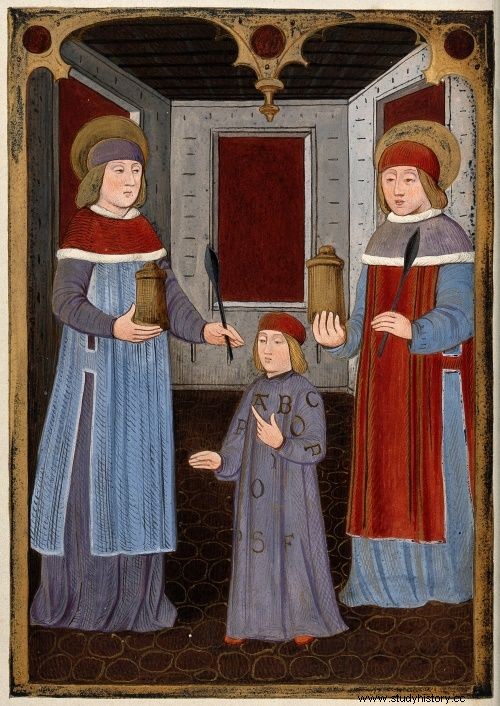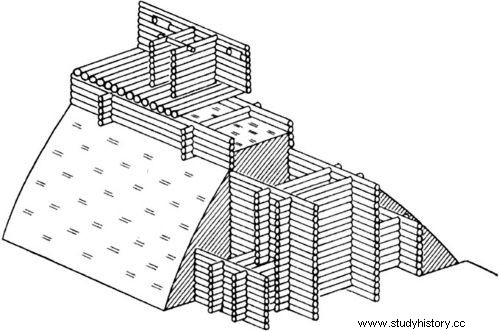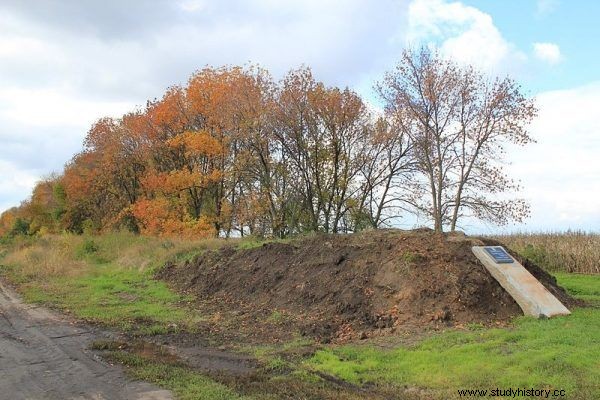The answer was well known by the Chinese and the Manchus. But at least our own king, Bolesław the Brave, would have to say as much about it.
It all started with two brothers, Kosma and Damian. However, they are not about saints popular in the Middle Ages, but about mythical heroes, present in Ruthenian folklore. On the Dnieper, the classic story of the Roman martyrs fused with the Nordic sagas, giving rise to the story of twins endowed with superhuman powers. The inhabitants of the Kiev region knew that Kosma and Damian were closer to the Scandinavian Thor or Odin than to the servants of Jesus. And they had tangible evidence for that.
Heroes and Snakes
One day, in a distant, unknowable time, the twins seized and harnessed to work an enormous snake, its body stretching to the horizon. They ordered him to plow the land, for the good of mankind. This is how the great plains of Rus were created, interspersed here and there with embankments that were many kilometers long. The latter were "wrinkles" left behind in the ground by laborious vipers.

Kosma and Damian. But the third one is definitely not a snake…
The inhabitants of late medieval Rus had them before their eyes. Those today also have. There are still over 800 kilometers of mysterious fortifications in Ukraine called the Snake Dikes. In the past, there were even more of them - 1000 kilometers. In some sections they climbed 12 meters up and a good 25 meters thick. It was obvious to the people of ancient times that building similar structures would be beyond the power of any ruler, army, or community.
The desire to unravel the mystery gave rise to the story of Kosma and Damian. Unnecessarily, because the shafts were actually placed by a human hand. And a very specific man was responsible for them:the Christianizer and unifier of Kievan Rus, Vladimir the Great.

The vipers' dikes extended as far as twelve meters, reaching a width of 25 meters at the base.
The great wall of ... Kiev
For several decades, from the end of the 10th century to at least the middle of the 11th century, the Rurkowicz family turned into a huge construction site. The lines of the embankments were laid out in such a way as to protect the banks of rivers, towns and entire districts of the country. They were built of sand, clay, and sometimes also bricks, made with Greek techniques. The stability of the structure was ensured by the wooden cladding of the walls of the embankments, made of logs up to 40 centimeters in diameter.
The network of fortifications also included forts, watchtowers and gates. Hundreds of soldiers manned them. Their task was not to defend the state against any specific, organized enemy - this or that ruler declaring war on the Grand Dukes of Kiev - but against ... the influx of immigrants.

A preserved fragment of the Żmijowe Embankments near Perejasław. Photo Maxim Bielushkin, license CC BY-SA 3.0.
Unbearable Immigrants
The problem faced by Russia was not unique to this country. The solution is also hardly unique. The Chinese also created their Great Wall to protect themselves from nomadic tribes. In their case, it was about the people of the Great Steppe. In Rus - about the pagan Pechenegs. Włodzimierz wanted to stop the attacks of the hordes, but also to limit the settlement of a culturally alien, "wild", difficult to control population in his country.
The huge scale of investments proves that he firmly believed that it was enough to erect a sufficiently high wall to discourage neighbors from crossing the border. Similar proposals are being made in America today by the controversial presidential candidate Donald Trump (the Great Wall on the Mexican border). Hundreds of politicians and commentators echo him in Europe (walls, nets, barriers protecting against the influx of refugees from the Middle East). One thing has not changed since the Middle Ages:the cost of similar fortifications is astronomical. But what about their effectiveness? What lessons can we learn from history?

Learn about the fascinating history of women who built Poland in the darkness of the Middle Ages. Ruthless, ambitious, talented. Kamil Janicki's "Iron Ladies" is now on sale !
There is no strong against Brave
With regard to China, it is enough to mention the Quing dynasty which originated in Manchuria. The Great Wall did not make it in the least difficult for her to attack and conquer the entire empire. Meanwhile, in Rus, Bolesław the Brave proved the pointless of setting up embankments against immigrants. In the famous expedition to Kyiv, praised by chroniclers, he was supported by the Germans, but they were not considered to be the most valuable ally. The Piast prince easily took the capital of Ruthenia, because the Pechenegs were on his side.
A thousand steppe warriors joined Brave's army. Huge embankments, on the construction of which Włodzimierz spent half his life, not only did not stop them, but did not even slow them down. They only came in handy for one thing:creating out-of-the-box, but colorful legends.
Also be sure to read the story of the comet Bolesław the Brave. Click here to find out what astronomy has to do with a trip to Kyiv ...
Sources:
The article is based on the literature and materials collected by the author during the work on the book "Iron Ladies. The Women Who Built Poland ” . Find out more by clicking HERE . Selected bibliographic items below:
- J. Dudek, Bruno of Querfurt's Mission to Patzinacia (1008 AD):new information about the Bulgarian-Byzantine War? , "Byzantinoslovaca", vol. 3, 2010.
- E. Kowalczyk, Wały Żmijowe. From studies on permanent defense of the Ruthenian lands in the early Middle Ages , "Kwartalnik Historii Kultury Materialnej", vol. 17, no. 2, 1969.
- K.S. Nossov, Medieval Russian Fortresses AD 862-1480 , Bloomsbury Publishing, 2012.
- P. Spring, Great Walls and Linear Barriers , Pen &Sword, 2015.
- J. Strzelczyk, Bolesław the Brave , Dig, 2014.
 We recommend:
We recommend:
The above column also appeared in the latest issue of the "Focus Historia" magazine (5/2016).
